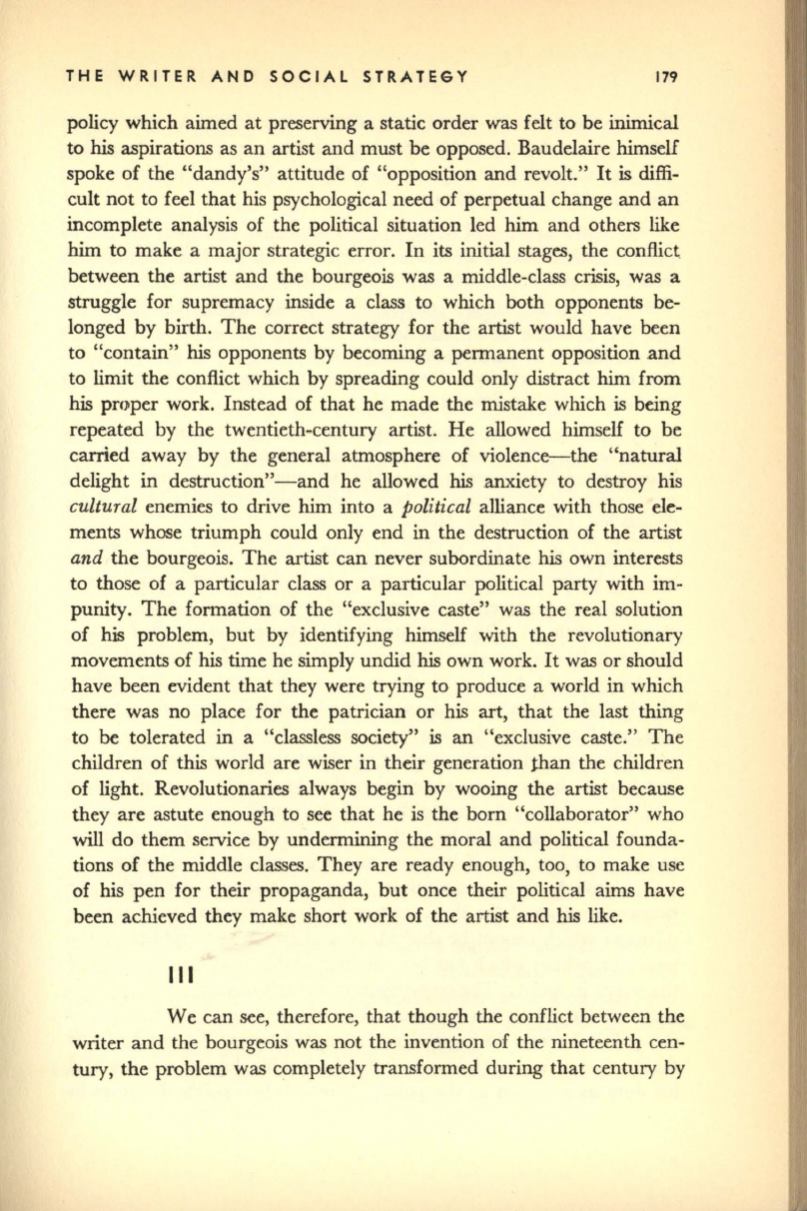
THE WRITER AND SOCIAL STRATEGY
179
policy which aimed at preserving a static order was felt to be inimical
to
his
aspirations as an artist and must be opposed. Baudelaire himself
spoke of the "dandy's" attitude of "opposition and revolt." It is
diffi–
cult not to feel that his psychological need of perpetual change and an
incomplete analysis of the political situation led him and others like
him to make a major strategic error. In its initial stages, the conflict
between the artist and the bourgeois was a middle-class crisis, was a
struggle for supremacy inside a class to which both opponents be–
longed by birth. The correct strategy for the artist would have been
to "contain"
his
opponents by becoming a permanent opposition and
to limit the conflict which by spreading could only distract him from
his proper work. Instead of that he made the mistake which is being
repeated by the twentieth-century artist. He allowed himself to be
carried away by the general atmosphere of violence-the "natural
delight in destruction"-and he allowed
his
,anxiety to destroy his
cultural
enemies to drive him into a
political
alliance with those ele–
ments whose triumph could only end in the destruction of the artist
and
the bourgeois. The artist can never subordinate
his
own interests
to those of a particular class or a particular political party with im–
punity. The formation of the "exclusive caste" was the real solution
of his problem, but by identifying himself with the revolutionary
movements of his time he simply undid
his
own work. It was or should
have been evident that they were trying to produce a world in which
there was no place for the patrician or his art, that the last thing
to
be
tolerated in a "classless society" is an "exclusive caste." The
children of this world are wiser in their generation than the children
of light. Revolutionaries always begin by wooing the artist because
they are astute enough to see that he is the born "collaborator" who
will
do them service by undermining the moral and political founda–
tions of the middle classes. They are ready enough, too, to make use
of his pen for their propaganda, but once their political aims have
been achieved they make short work of the artist and
his
like.
III
We can see, therefore, that though the conflict between the
writer and the bourgeois was not the invention of the nineteenth cen–
tury, the problem was completely transformed during that century by


